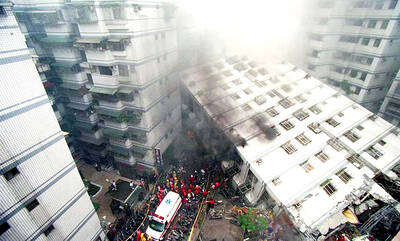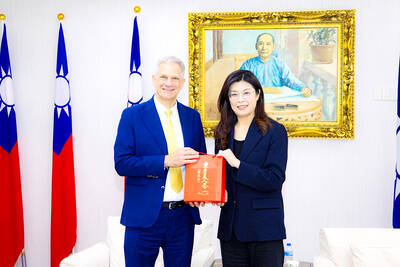US General Douglas MacArthur was once revered in South Korea as a war hero who repelled an invasion by North Korean troops half a century ago.
The late US general's glory, however, is fading among young South Koreans who have no personal experience of the Korean War which left some 34,000 US soldiers dead.
MacArthur, who served as commander-in-chief of a 16-nation UN force during the early days of the 1950 to 1953 war, led the daring Incheon landing that turned the tide of the three-year conflict.
The operation on Sept. 15, 1950 helped the UN forces recapture most of South Korea from the communist North and advance close to China before being pushed southward by Chinese troops.
Four years after the war, South Koreans erected a bronze statue of MacArthur at Freedom Park in the western port of Incheon to show their gratitude. The 5m-high statue portrays MacArthur holding a pair of binoculars and overlooking the bustling port where he landed.
An English-language inscription on the monument reads: "We shall never forget what he and his valiant officers and men of the United Nations Command did here for us and for freedom."
"We will never forget what he did for us. He is a hero who stopped the communization of the Korean peninsula," said Lee Jin-ho, a 74-year-old veteran who fought alongside US soldiers during the war.
But forget is exactly what some South Koreans want to do.
After laying a wreath at the memorial, Lee joined hundreds of other pro-US demonstrators, including war veterans in their 60s and 70s, who gathered in the park last Sunday to block about 50 anti-US activists intent on pulling down the statue.
Split by riot police, the two groups shouted insults at each other. Pro-MacArthur activists waved US and South Korean flags, calling their opponents "pro-North Korean commies".
The anti-US protestors responded with calls for the withdrawal of US troops and the dismantlement of the general's image. They condemned MacArthur as "the chief of the occu-pying forces."
"The statue is part of our humiliating history," said Kim Su-nam, a 65-year-old activist wearing a yellow jacket inscribed with anti-US slogans.
"By dismantling the statue, we want to stoke an anti-US movement aimed at expelling US troops from the peninsula," Kim said.
Using a loudspeaker, he rebuked the pro-US demonstrators as "followers of the US colonial master."
But his voice was buried by the supporters of MacArthur who noisily chanted pro-US slogans and blared military songs from a more powerful loudspeaker to drown out the slogans of their opponents.
Kim has staged a sit-in in the park for two months for his anti-MacArthur campaign which flared in 2002 when two teenage girls were crushed to death by a US military vehicle.
North Korea has supported Kim's campaign, calling MacArthur "an unrivaled war enthusiast."
The two-hour confrontation in the park highlighted debate over the role of US troops in South Korea.
Washington stations 32,500 troops who stand shoulder-to-shoulder with some 700,000 South Korean troops as a deterrent to North Korea's 1.1 million-strong army.
But many young South Koreans with no experience of the war have begun to question the need for US troops in their country. Anti-US groups insist the US agreed with other superpowers at the end of World War II to colonize the southern part of the peninsula.
"The statue is a symbol of colonial rule. We should not hand over this colony to our sons and daughters," said Kang Hee-nam, 85, who leads an anti-American committee.
Kang's group backed Pyongyang's argument that the US induced North Korea to trigger the war. It also accused Washington of heightening tension over North Korea's nuclear weapons drive.
But other regard the anti-US protesters as ungrateful.
"Instead of quibbling, they should pay attention to North Korea's human rights situation and the dictatorship of its Kim Jong-il regime," Lee Phil-han, a 56-year-old businessman in Incheon, said.
"We owe a lot to the United States which played a key role in our economic development. My notion is being supported by a silent majority of South Koreans."

Seven hundred job applications. One interview. Marco Mascaro arrived in Taiwan last year with a PhD in engineering physics and years of experience at a European research center. He thought his Gold Card would guarantee him a foothold in Taiwan’s job market. “It’s marketed as if Taiwan really needs you,” the 33-year-old Italian says. “The reality is that companies here don’t really need us.” The Employment Gold Card was designed to fix Taiwan’s labor shortage by offering foreign professionals a combined resident visa and open work permit valid for three years. But for many, like Mascaro, the welcome mat ends at the door. A

Last week gave us the droll little comedy of People’s Republic of China’s (PRC) consul general in Osaka posting a threat on X in response to Japanese Prime Minister Sanae Takaichi saying to the Diet that a Chinese attack on Taiwan may be an “existential threat” to Japan. That would allow Japanese Self Defence Forces to respond militarily. The PRC representative then said that if a “filthy neck sticks itself in uninvited, we will cut it off without a moment’s hesitation. Are you prepared for that?” This was widely, and probably deliberately, construed as a threat to behead Takaichi, though it

If China attacks, will Taiwanese be willing to fight? Analysts of certain types obsess over questions like this, especially military analysts and those with an ax to grind as to whether Taiwan is worth defending, or should be cut loose to appease Beijing. Fellow columnist Michael Turton in “Notes from Central Taiwan: Willing to fight for the homeland” (Nov. 6, page 12) provides a superb analysis of this topic, how it is used and manipulated to political ends and what the underlying data shows. The problem is that most analysis is centered around polling data, which as Turton observes, “many of these

Since Cheng Li-wun (鄭麗文) was elected Chinese Nationalist Party (KMT) chair on Oct. 18, she has become a polarizing figure. Her supporters see her as a firebrand critic of the ruling Democratic Progressive Party (DPP), while others, including some in her own party, have charged that she is Chinese President Xi Jinping’s (習近平) preferred candidate and that her election was possibly supported by the Chinese Communist Party’s (CPP) unit for political warfare and international influence, the “united front.” Indeed, Xi quickly congratulated Cheng upon her election. The 55-year-old former lawmaker and ex-talk show host, who was sworn in on Nov.